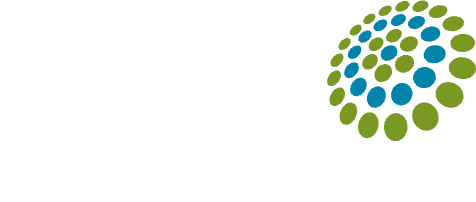Remember when AI sounded like something ripped straight out of a sci-fi movie like 2001: A Space Odyssey? Fast forward to today—artificial intelligence surrounds us, from your inbox to your newsfeed and even in your favorite playlist. Since OpenAI burst onto the scene in 2020, AI adoption has skyrocketed, turning what once felt futuristic into a daily reality for businesses big and small.
Of course, with new tools popping up every week (and updates coming faster than you can say “algorithm”), feeling overwhelmed happens easily. But here’s the truth: AI won’t fade away—it’s quickly becoming a must-have skill for anyone aiming to stay ahead of the game.
So, if you’ve ever wondered what AI can do for you (or worried you’re already behind), don’t stress. We’re here to break down the basics, show you where to start, and share how AI can give your business an edge. Ready to dive in? Let’s make AI your new secret weapon.
What Exactly Defines AI?
Artificial Intelligence (AI) describes the science of making machines smarter and capable of completing tasks typically done by humans. These tasks include learning, problem-solving, language understanding, and pattern recognition. Machines need some coaching; AI doesn’t inherently “know” anything. Instead, the software improves over time by learning from the data it receives.
Here’s a simplified way to understand how AI works:

Artificial Intelligence refers to a broad concept. Meanwhile, Machine Learning functions as a subset that enables machines to learn from data and improve performance without explicit programming. Deep Learning, a further subset of Machine Learning, uses neural networks to analyze data in more complex ways.
Large Language Models (LLMs)
To fully grasp AI, understanding Large Language Models becomes essential. A Large Language Model (LLM) refers to a type of Artificial Intelligence designed to understand and generate human language. This model serves as the foundation for tools like ChatGPT, Gemini, and others.
What AI Can Accomplish Today
Initially, OpenAI introduced a glorified chatbot. Truthfully, AI’s baseline abilities were very constrained. But five years later, AI can now perform arduous tasks in minutes that once required hours.
In the realm of content, AI writes blog posts, emails, social media captions, and product descriptions with impressive speed and clarity. Tools like ChatGPT or Gemini summarize lengthy documents, translate languages, and shift tones for different audiences. Businesses use AI to automate customer support through chatbots and virtual assistants that handle common inquiries and escalate complex issues.
On the data side, AI analyzes massive datasets, surfaces insights, and generates forecasts to guide decisions. In marketing, AI personalizes email campaigns, optimizes ad performance, and brainstorms campaign strategies.
Creative fields continue to evolve too; AI now generates images, videos, and synthetic voices, making high-quality multimedia easier to produce. Productivity tools powered by AI manage scheduling, summarize calls, and help developers write, review, and test code.
With growing automation capabilities, AI has become a permanent fixture across all industries—not just a trend.
The AI Opportunity
In the next couple of years, predictions suggest that 80% of knowledge work will be AI-assisted, and about 78% of companies worldwide already incorporate AI into their daily workflows. Avoid being part of the 22% left behind. To embrace this opportunity, start by exploring these two models:
Problem-Based Model
The Problem-Based Model works well for businesses seeking focused, results-driven AI applications. Start by identifying a current pain point—a specific inefficiency or challenge. Next, connect that issue to a measurable business goal.
Begin with two clear statements:
- Problem Statement: Define what’s going wrong or what needs improvement.
- Value Statement: Explain what success looks like when the problem gets solved.
Once defined, explore ways AI might offer support. Could AI assist in lead scoring? Improve outreach copy? Automate data tracking? This model ensures AI gets used with purpose, to generate real business impact.
Use Case Model
The second model is the Use Case Mode; perfect for uncovering practical, everyday opportunities to bring AI into your existing workflows. This method doesn’t start with a problem, but rather with your current tasks. By reviewing what you and your team already do daily, you can pinpoint where AI might make things faster, smarter, or easier.
To begin, evaluate your regular tasks by asking:
- Is this task Data-driven?
- Is this task Repetitive?
- Is this task Predictable?
- Is this task Generative?
If you answer yes, then the task likely suits AI integration.
For instance, you can auto-generate weekly status emails. Large batches of customer feedback can be quickly analyzed for sentiment. In marketing, AI drafts subject lines, generates audience segments, and creates sample posts. The Use Case Model helps embed AI into familiar routines, easing adoption and driving productivity.
Best Practices for Prompt Building: RACE & PARE Models
To get the most out of AI tools, crafting great prompts becomes essential. A weak prompt means a weak output and can result in poorly done work that you will later need to correct. To avoid this, here are two powerful models to help you build better, more effective prompts.
RACE Model: Great for building clear and focused prompts.
- Role: What persona or tone should the AI take? (e.g., “Act as a senior content marketer.”)
- Action: What do you want the AI to do? (e.g., “Write a blog outline.”)
- Context: What background information does the AI need? (e.g., “The blog is for B2B SaaS leaders.”)
- Examples: Provide examples (if possible) to guide the style or format.
PARE Model: Best for refining or improving existing content.
- Problem: What are you trying to fix or improve?
- Audience: Who is the message for?
- Request: What exactly do you want to do?
- Expectations: What should the output look like?
Prioritizing People-First AI
Now that you know what AI can do for you and your company and have learned different models and prompts to start your AI journey, it’s important to remember that AI is not a job replacer. Introducing AI into your workflow does not mean you should lay off half of your staff. To be successful in AI, you need to prioritize People-First AI. People-First AI is an approach to Artificial Intelligence that prioritizes human values, ethics, and empowerment over pure automation or efficiency.
People-First AI means using AI tools to enhance human work, not replace it altogether. AI can’t do what humans do, which is create meaning, give emotions, and be genuinely creative. It also doesn’t understand human things like nuances or emotional intelligence.
To practice People-First AI, be sure to involve your team in the adoption process. Use AI to support, not replace, human creativity and judgment, and regularly evaluate your tools to ensure proper alignment with your values and business goals.
Your AI Journey Starts Today
Get ready to embark on your AI journey! Now that you have been fully equipped with models and pro prompt formulas to generate the best results, you’re more than set to take on the ever-growing world of AI. While AI can do hundreds of different tasks, don’t forget, your employees come first. Be ethical and responsible and always remember People-First AI is key.
Ready to integrate AI into your business strategy but not sure where to start? Let our experts at Premiere Creative help you unlock AI’s full potential. Give us a call at (973) 346-8100 and let’s build your future together.



